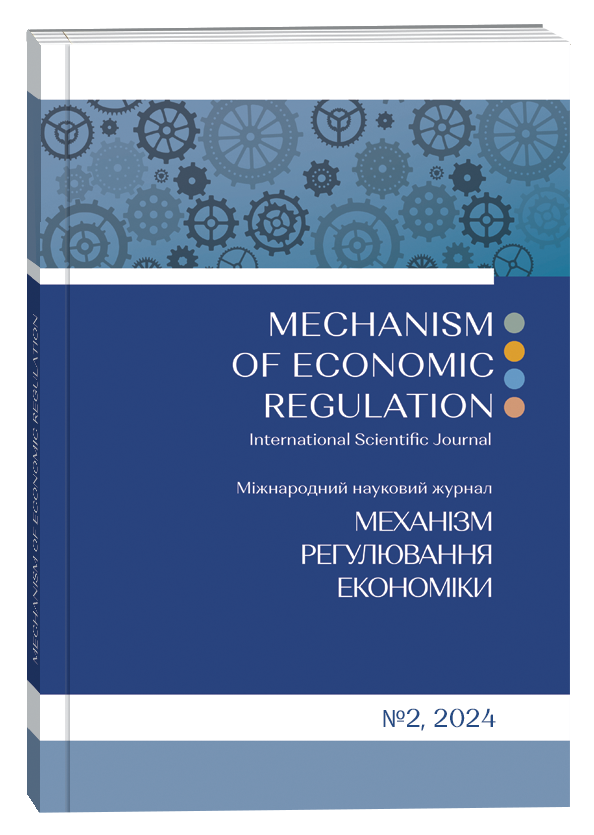ANALYSIS OF IMPLEMENTATION THE ERP-SYSTEM FOR ACHIEVING SUSTAINABLE ENTERPRISE DEVELOPMENT IN THE CONTEXT OF DIGITAL TRANSFORMATION
Abstract
Digital technologies are a key factor in economic growth, increasing the competitiveness of enterprises and sustainable development. The implementation of enterprise resource planning systems (ERP systems) is one of the tools of digital transformation that has greater potential than alternative approaches. This article is devoted to the analysis of the main advantages and capabilities of ERP systems, as well as their comparison with alternative ways of digital transformation, such as the improvement of existing systems. The study reveals the problems associated with the use of outdated production management systems and demonstrates that such systems are not able to provide the necessary coordination and interaction between different functional units of the enterprise, which leads to reduced production efficiency, increased costs and deteriorated competitiveness. Modern technologies, in particular ERP systems, allow overcoming these limitations. ERP systems are complex information systems that combine all the main business processes (BP) of an enterprise in a single information space. This allows to optimize processes, automate production, monitor activities in real time and increase adaptability to the market changes. The article defines the technical and strategic aspects of the transition to an ERP system and emphasizes that this is not only a technological step, but also a strategic decision to create a sustainable and competitive basis for the further business development. The authors propose to conduct a thorough analysis of the feasibility of implementing an ERP system, taking into account the specific needs and features of the enterprise, market changes and technological progress for optimal selection and successful implementation of such systems. This strategy allows the enterprise to choose the optimal version of the ERP system and successfully implement its.
References
Alves, M. C. & Matos, S. I. A. (2012). ERP adoption by public and private organizations – a comparative analysis of successful implementations. Journal of business economics and management, vol. 14(3). DOI: https://doi.org/10.3846/16111699.2011.652979 (accessed on: 10.12.2023)
Batiuk, A. E. (2004). Information systems in management: Lviv: Intellect-Zahid.
Vovk, I. (2011). Problems of automating enterprise resource management by means of ERP systems. Socio-economic problems and the state, vol. 2(5). Available at: http://sepd.tntu.edu.ua/images/stories/pdf/2011/11vipres.pdf (accessed on: 10.12.2023)
Chalyi, S. F. (2007). Automated management of business processes (models, methods and technologies): dissertation. Dr. Tech. Sciences: specialist 05.13.06. Kharkiv National University of Radio Electronics.
Yanchuk, T. F. (2016). The importance of the mechanism of information technology implementation in the economic activity of the enterprise. Economics and management organization, vol. 4(24). Available at: https://jeou.donnu.edu.ua/issue/view/74 (accessed on: 10.12.2023)
Tomchuk, V. V. & Kalachyk, A. V. (2019). ERP systems and their places in management accounting. Finance accounting banks, vol. 1 (24). Available at: https://r.donnu.edu.ua/xmlui/handle/123456789/762?show=full (accessed on: 10.12.2023)
Oksamitna, L. P. & Pryaha, R. I. (2022). Features of modern ERP systems for managing enterprise business processes. Management of development of complex systems, vol. 51. DOI: https://doi.org/10.32347/2412-9933.2022.51.31-40 (accessed on: 10.12.2023)
Pylypenko, L. M. & Redko, M. O. (2019). Analysis of the advantages and disadvantages of implementing the ERP system at enterprises. Pryazovsky economic gazette, vol. 6(17). Available at: https://www.pev.kpu.zp.ua/journals/2019/6_17_ukr/6_17_2019.pdf#page=172 (accessed on: 10.12.2023)
Zhus, O. M., Rakytska, S. O. & Tozhieva, H. M. (2023). Stabilization of construction industry enterprises through the implementation of the ERP system. Digital economy and economic security, vol. 4(04). Available at: http://dees.iei.od.ua/index.php/journal/article/view/122 (accessed on: 10.12.2023)
Smolych, D. V. (2021). Optimizing enterprise resource management by implementing an ERP system. Economic space, vol. 166. Available at: http://srd.pgasa.dp.ua:8080/bitstream/123456789/6406/1/Smolych%20.pdf (accessed on: 10.12.2023)
What is an ERP system and what are its benefits. Available at: https://kpmg.com/ua/uk/blogs/home/posts/2022/10/shcho-take-erp-systema-ta-v-chomu-yiyi-koryst.html (accessed on: 10.12.2023)
Features of modern erp systems for managing business processes of an enterprise. Available at: https://urss.knuba.edu.ua/files/zbirnyk-51/31-40_0.pdf (accessed on: 10.12.2023)
What is an ERP enterprise management system and where is it better to place it? Available at: https://www.sim-networks.com/ukr/blog/enterprise-resource-planning-systems-and-cloud-infrastructure (accessed on: 10.12.2023)
What is PERT? Available at: https://experience.dropbox.com/uk-ua/resources/pert (accessed on: 10.12.2023)
BAS ERP. Available at: https://www.bas-soft.eu/soft/bas-corp/bas-erp/ (accessed on: 10.12.2023)
BAS products and prices. Available at: https://conto.com.ua/ua/prices (accessed on: 10.12.2023)


